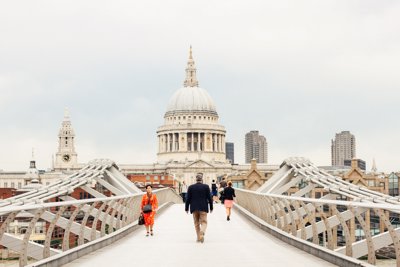Focussing heavily on the key geographical concepts of place and space, the unit investigates both temporal and spatial change, and encourages students to identify their own place within the geography and history of their local area.
In the first lesson, the key terms local and history are defined, and the scene is set through a discussion of the sources of information and evidence that are available for investigation into local history. Students also take preliminary steps towards finding out about their local area through a comparison between historical texts and their own present day experiences.
Employing a range of techniques for graphicacy and visual literacy, lesson two introduces the importance of population studies over time as a tool for both geographical and historical investigation. Students engage in a living graph activity to physically recreate population change in their local area and consider the reasons for such change. There is also the opportunity in this lesson to invite a local person to deliver an oral history to the class, documenting their personal experiences of change in the local area.
Following on from the study of population change over time, lesson three focuses on the changing physical size of the local settlement. Students employ map skills to compare historical and current maps of their site, and elements of archaeological study are introduced as one way of explaining both the naming and the siting of present day settlements. This lesson also gives students the opportunity to develop their GIS skills through a Google Earth based activity.
Lesson four introduces further cross-curricular links, through the study of religious buildings in the local area, and the input that these can make to geographical and historical learning. Depending on the scale and location of the settlement in question, study can be made of a single or multiple buildings, with the possibility of encompassing a range of different religions and the specific roles of these buildings within the community historically, currently and into the future.
In lesson five the focus of the unit is narrowed to the immediate vicinity of the school. Students compare their experiences of school life with those of children at the end of the 19th Century. There is the opportunity to experience some of the subjects and types of activities that were popular in Victorian times, and then to investigate the history of their school - however long or short that might be.
As an optional extra, lesson six sets out a fieldwork investigation that can be undertaken in the local area, if time and circumstances allow. The key elements of the unit thus far are supported with primary and secondary data collection in the field.
To end the unit, students investigate their personal place in the history and geography of their local area, and draw on their knowledge and understanding from the entire unit to design a mural to encapsulate the physical, social and cultural changes that have occurred within their community.
Downloads
File nameFiles
File type
Size
Download
Our Place In History Lesson 1 How Has Our Local Area Been Described In The Past? Teachers' Notes
.doc
863 KB
Our Place In History Lesson 1 How Has Our Local Area Been Described In The Past? Teachers' Notes (1)
588 KB

